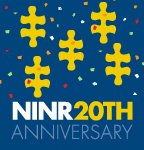
At St. Joseph Hospital, our mission is to deliver safe care and use best practices based on research and the best evidence. Implementation of a practice change is not easy, but will be successful with a dedicated and enthusiastic multidisciplinary team.
The sedation team has been meeting as a group for over one year now. We have added members and some members have left. But the goal remains clear: to develop an approach to patient centerd care of the Critical Care patient who is on the ventilator and in need of sedation. The goal of this plan was to reduce the amount of time the patient spent on the ventilator. We would accomplish this by giving the patient the best sedation at the correct levels for their individual needs. The plan included a daily awakening to assess for readiness to com off the ventilator rather than leave the patient sedated longer than necessary.
Victoria Randazzo, who is the champion of this issue as well as the chairperson of the committee, has brought together a multidisciplinary team to improve the care of this group of patients. Her team consists of Intensivist, Pharmacists, Nursing Clinical Educator, Critical Care unit management and 10 members of the nursing staff, Respiratory Department management and staff as well as Dana Rutledge, the Nurse Research Facilitator.
The team has worked together to develop a set of physician orders that adhere to the policy and procedure that Victoria authored. An education module for the critical care nursing staff was developed with input from everyone. The entire critical care staff attended the in-service which was taught completely by the nurses on the sedation team.
Following this education process, the physician orders were distributed and our plans then went into effect. In addition to this core education, one of the Intensivists provided an education seminar for the critical care staff on agitation and sedation in general. He and a sub group are working on developing a set of physician orders for the non-ventilated critical care patient.
We have just started to proceed with chart review, but we've discovered a decrease in need for patient restraints already. We expect to find fewer self-extubations and a shorter time on the ventilator with subsequent decreases in VAP as well as decreased of LOS.
We have increased patient comfort and our family survey revealed improved satisfaction when receiving care from a kind, loving nurse who is now able to efficiently reduce the agitation and maintain comfort for their loved ones while on the ventilator. The long term team effort - where all disciplines were working toward enhanced patient outcomes - increased the collegial relationship between physicians, staff nurses, respiratory therapy and pharmacy.







